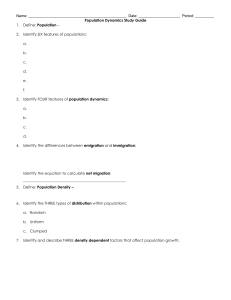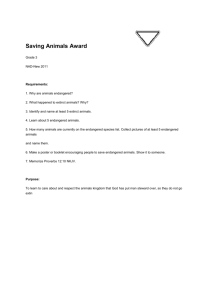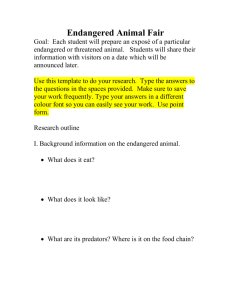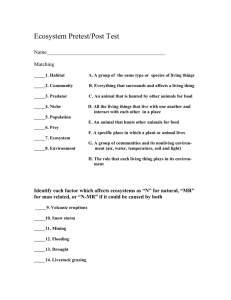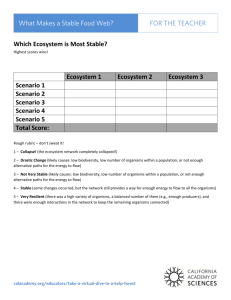Population & Biodiversity Study Guide
advertisement
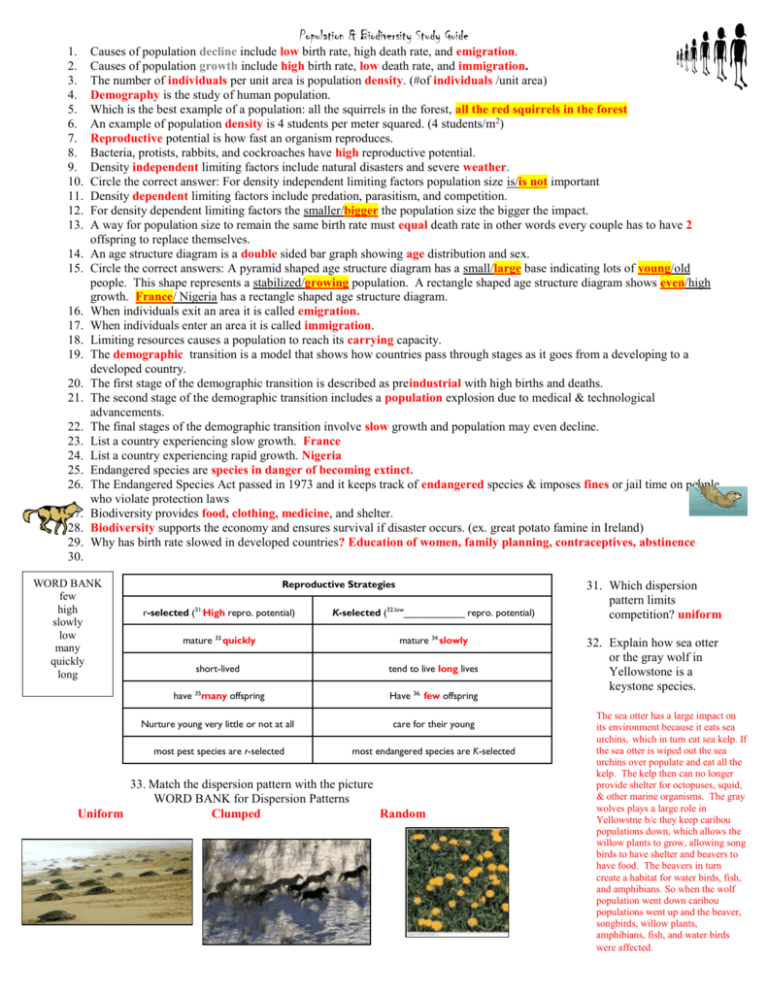
Population & Biodiversity Study Guide 1. 2. 3. 4. 5. 6. 7. 8. 9. 10. 11. 12. 13. 14. 15. 16. 17. 18. 19. 20. 21. 22. 23. 24. 25. 26. 27. 28. 29. 30. Causes of population decline include low birth rate, high death rate, and emigration. Causes of population growth include high birth rate, low death rate, and immigration. The number of individuals per unit area is population density. (#of individuals /unit area) Demography is the study of human population. Which is the best example of a population: all the squirrels in the forest, all the red squirrels in the forest An example of population density is 4 students per meter squared. (4 students/m2) Reproductive potential is how fast an organism reproduces. Bacteria, protists, rabbits, and cockroaches have high reproductive potential. Density independent limiting factors include natural disasters and severe weather. Circle the correct answer: For density independent limiting factors population size is/is not important Density dependent limiting factors include predation, parasitism, and competition. For density dependent limiting factors the smaller/bigger the population size the bigger the impact. A way for population size to remain the same birth rate must equal death rate in other words every couple has to have 2 offspring to replace themselves. An age structure diagram is a double sided bar graph showing age distribution and sex. Circle the correct answers: A pyramid shaped age structure diagram has a small/large base indicating lots of young/old people. This shape represents a stabilized/growing population. A rectangle shaped age structure diagram shows even/high growth. France/ Nigeria has a rectangle shaped age structure diagram. When individuals exit an area it is called emigration. When individuals enter an area it is called immigration. Limiting resources causes a population to reach its carrying capacity. The demographic transition is a model that shows how countries pass through stages as it goes from a developing to a developed country. The first stage of the demographic transition is described as preindustrial with high births and deaths. The second stage of the demographic transition includes a population explosion due to medical & technological advancements. The final stages of the demographic transition involve slow growth and population may even decline. List a country experiencing slow growth. France List a country experiencing rapid growth. Nigeria Endangered species are species in danger of becoming extinct. The Endangered Species Act passed in 1973 and it keeps track of endangered species & imposes fines or jail time on people who violate protection laws Biodiversity provides food, clothing, medicine, and shelter. Biodiversity supports the economy and ensures survival if disaster occurs. (ex. great potato famine in Ireland) Why has birth rate slowed in developed countries? Education of women, family planning, contraceptives, abstinence WORD BANK few high slowly low many quickly long Reproductive Strategies r-selected (31.High repro. potential) K-selected (32.low___________ repro. potential) mature 33.quickly mature 34.slowly short-lived tend to live long lives have 35many offspring Have 36. few offspring Nurture young very little or not at all care for their young most pest species are r-selected most endangered species are K-selected 33. Match the dispersion pattern with the picture WORD BANK for Dispersion Patterns Uniform Clumped Random 31. Which dispersion pattern limits competition? uniform 32. Explain how sea otter or the gray wolf in Yellowstone is a keystone species. The sea otter has a large impact on its environment because it eats sea urchins, which in turn eat sea kelp. If the sea otter is wiped out the sea urchins over populate and eat all the kelp. The kelp then can no longer provide shelter for octopuses, squid, & other marine organisms. The gray wolves plays a large role in Yellowstne b/c they keep caribou populations down, which allows the willow plants to grow, allowing song birds to have shelter and beavers to have food. The beavers in turn create a habitat for water birds, fish, and amphibians. So when the wolf population went down caribou populations went up and the beaver, songbirds, willow plants, amphibians, fish, and water birds were affected.



